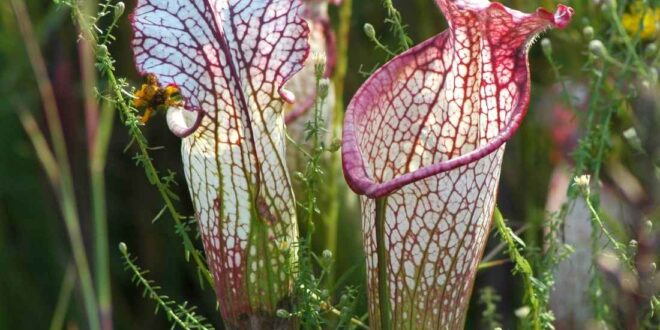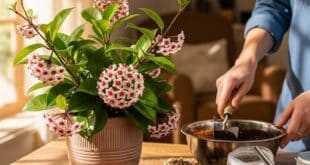Meet The Pitcher Plant
In this guide, we’ll walk you through pitcher plant care, but first, let’s get to know this unique plant. Pitcher plants, belonging to intriguing genera such as Nepenthes, Sarracenia, Cephalotus, Darlingtonia, and Heliamphora, are captivating carnivorous plants that have evolved modified leaves in the form of pitchers to trap and digest insects. Their unique appearance and fascinating feeding habits make them a prized addition to any plant enthusiast’s collection. Caring for these plants can differ greatly depending on the specific genus.
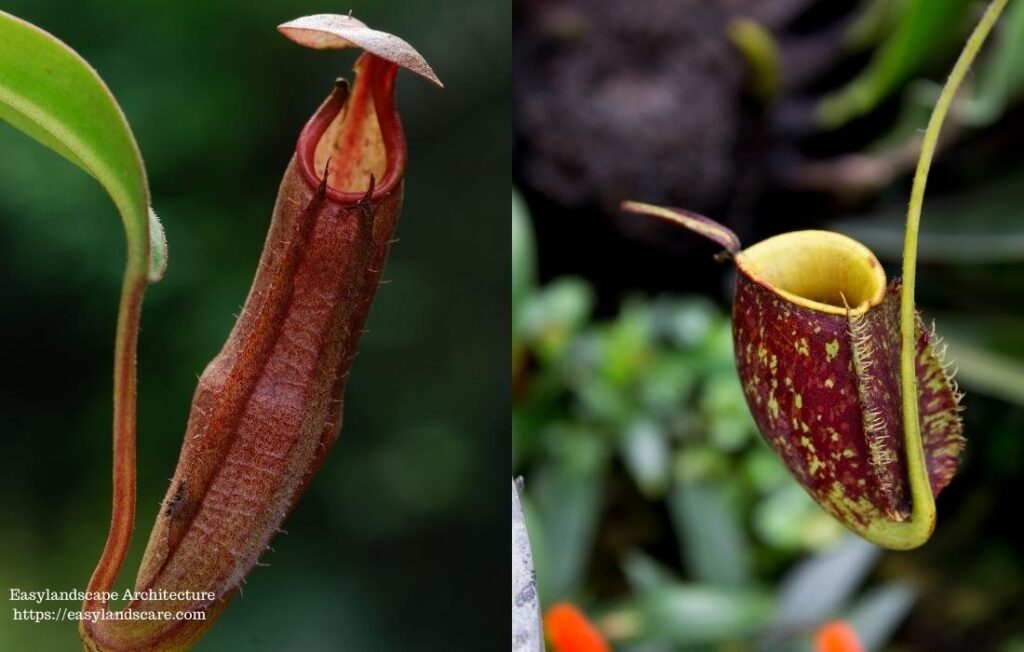
This guide provides a detailed overview of Pitcher Plant Care, highlighting essential aspects and noting variations between common types. Always research the specific needs of your particular pitcher plant species for optimal growth.
Why Choose a Pitcher Plant?
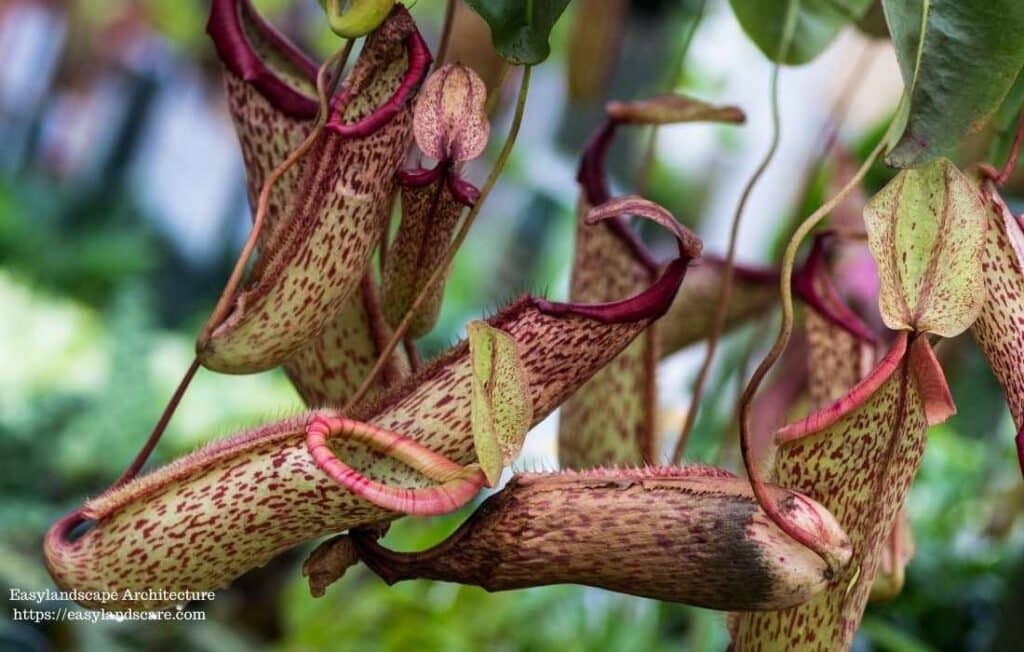
Pitcher plants are remarkable marvels of the botanical world. Their intricate and often colorful pitchers are both beautiful and functional, adding a unique and educational element to your plant collection. Observing their trapping mechanisms can be fascinating. While they require specific care, the reward is a truly distinctive and conversation-starting plant. Pitcher Plant Care is essential to ensure these plants thrive and display their natural beauty.
Essential Tips for Pitcher Plant Care
Light Requirements of the Pitcher Plant
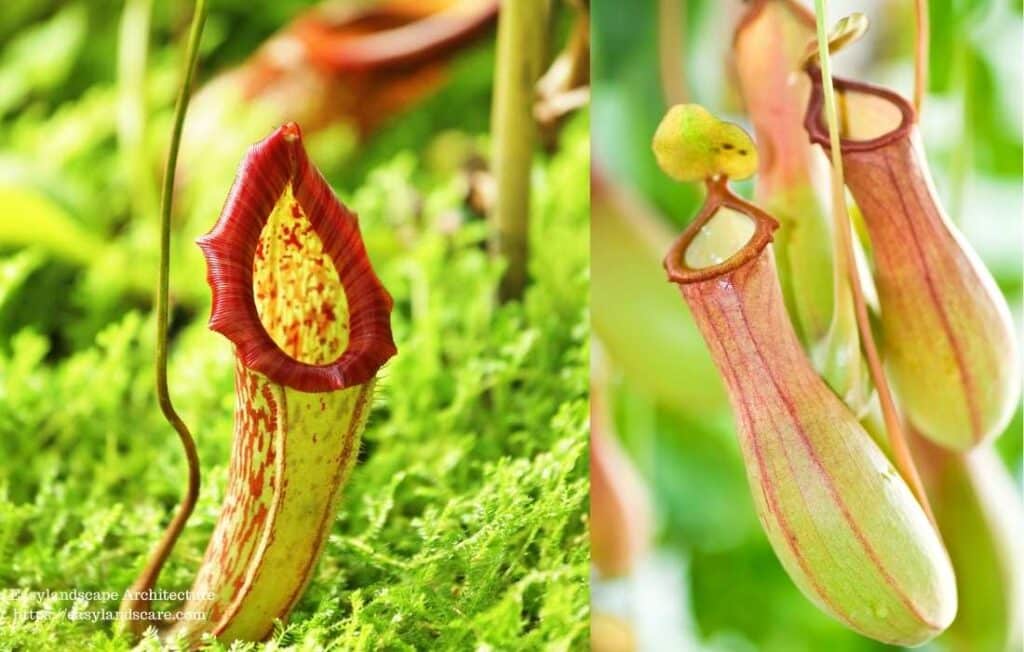
- Bright Light is Essential: Most pitcher plants require bright light to thrive and develop their characteristic pitchers. Insufficient light can lead to poor growth and a lack of pitcher production.
- Direct Sunlight (Generally Tolerated or Preferred): Many pitcher plants, especially Sarracenia and some Nepenthes (highland varieties), tolerate or even prefer several hours of direct sunlight.
- Indirect Bright Light (for Some Nepenthes): Some Nepenthes species (especially lowland varieties) prefer bright, indirect light. Direct, intense sun can scorch their leaves.
- Observe Your Plant: Pay attention to your specific pitcher plant’s needs and observe its reaction to the light it receives.
Pitcher Plant Watering and Moisture
- Use Pure Water: Pitcher plants are sensitive to minerals and salts found in tap water. Always use rainwater, distilled water, or reverse osmosis (RO) water.
- Keep Soil Moist (But Not Waterlogged): The soil should generally be kept consistently moist but not waterlogged. The ideal moisture level can vary slightly between genera.
- Sarracenia, Darlingtonia, Heliamphora: Often prefer their pots sitting in a shallow tray of pure water during their growing season.
- Nepenthes, Cephalotus: Prefer their soil to be consistently moist but not sitting in water. Allow the top inch to dry slightly between waterings.
- Watering from the top (commonly recommended): This method helps to remove any mineral accumulation in the soil.
Humidity Preferences
- High Humidity is Generally Beneficial: Most pitcher plants thrive in high humidity levels (above 50%), mimicking their native tropical or bog environments.
- Nepenthes, Cephalotus, Heliamphora: Often require higher humidity levels to produce well-formed pitchers.
- Sarracenia, Darlingtonia: Can tolerate lower humidity but generally do better with moderate to high humidity.
- Increase Humidity By: Using a humidifier, pebble tray, or enclosing the plant in a terrarium (ensure good airflow).
Temperature Preferences
- Varies by Genus and Species: Temperature requirements can vary significantly.
- Sarracenia, Darlingtonia: Sarracenia and Darlingtonia can tolerate a broader range of conditions, including cooler temperatures and a winter dormancy period.
- Nepenthes: Divided into “highland” (cooler nights) and “lowland” (warmer, consistent) species with different temperature needs.
- Cephalotus: Prefers moderate temperatures.
- Heliamphora: Often prefer cooler temperatures, especially at night.
- Research Your Specific Plant: It’s crucial to know the temperature preferences of your specific pitcher plant.
Soil Requirements
- Nutrient-Poor, Acidic Substrate: Pitcher plants are adapted to nutrient-poor environments and are sensitive to standard potting soil and fertilizers. Use a specialized carnivorous plant mix.
- Common Substrates: A mix of sphagnum peat moss and perlite or horticultural sand is commonly used. Some growers also use coco coir.
- Avoid Fertilizers: Never use regular fertilizers on pitcher plants, as this can burn their sensitive roots. They obtain nutrients from the insects they trap.
- Repotting: Repot every 1-2 years in fresh carnivorous plant substrate, ideally in the spring.
How To Feed Pitcher Plants
- They Catch Their Own Food: Pitcher plants are designed to trap and digest insects. Indoors, they may not catch enough on their own.
- Supplement Feeding (Optional): You can occasionally supplement their diet by dropping small, non-fertilized insects (like fruit flies or small ants) into their pitchers. Avoid feeding them large or processed foods.
- Don’t Overfeed: Overfeeding can lead to pitcher die-off. A few insects per pitcher every few weeks is sufficient.
Dormancy (for Temperate Species)
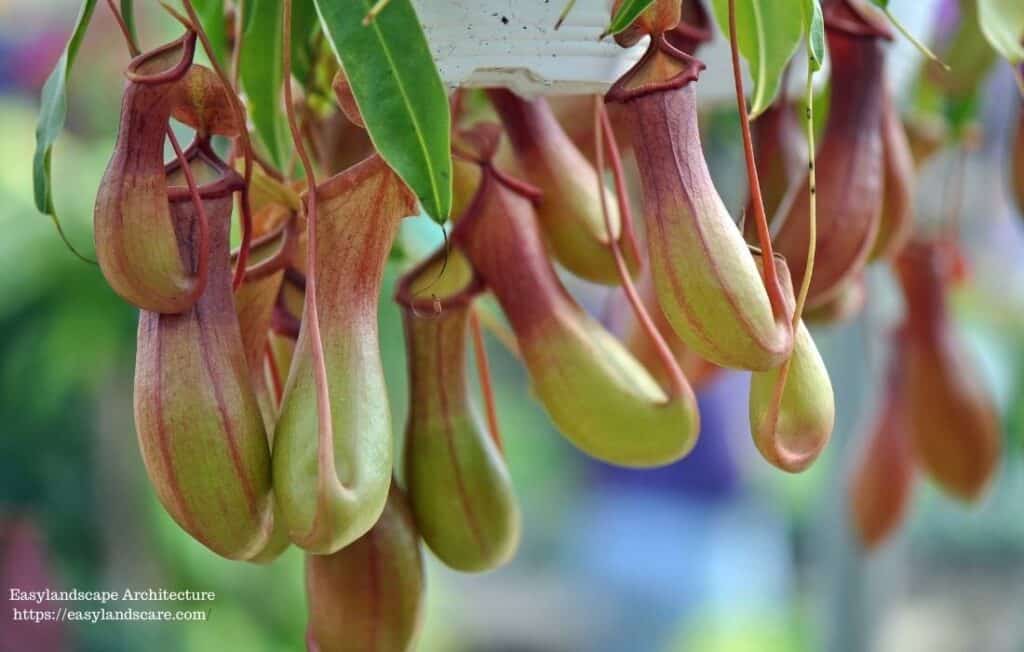
- Sarracenia, Darlingtonia: These temperate species require a dormancy period during the winter months, characterized by cooler temperatures and reduced light and watering. This rest period is crucial for their long-term health and flowering. Research the specific dormancy requirements for your species.
- Nepenthes, Cephalotus, Heliamphora (generally): These tropical species do not require a true dormancy but may have a period of slower growth in cooler months.
Specific Genus Notes About Pitcher Plant Care
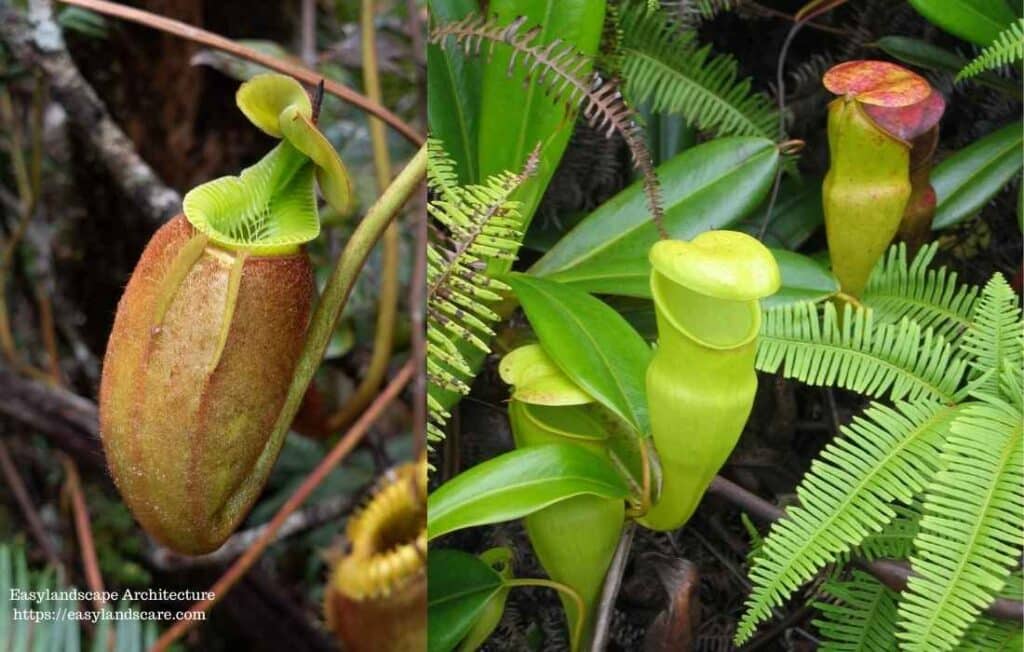
- Nepenthes (Tropical Pitcher Plants): Highly diverse. Research if your species is highland or lowland for temperature and humidity needs. They typically thrive in bright, indirect light (with some varieties able to tolerate more direct sunlight), with consistently moist soil that isn’t waterlogged, and high humidity.
- Sarracenia (North American Pitcher Plants): Prefer full sun, consistently moist soil (often sitting in water during growing season), and require a cool, dormant winter.
- Cephalotus follicularis (Albany Pitcher Plant): Prefers bright light (can tolerate some direct sun), consistently moist but not waterlogged soil, moderate temperatures, and good humidity.
- Darlingtonia californica (Cobra Lily): More challenging. Prefers cool to cold root temperatures, bright light, consistently moist soil with excellent drainage, and pure, cold water. Dormancy is required.
- Heliamphora (Sun Pitchers): Often prefer cooler temperatures (especially at night), very bright light, consistently moist and well-draining acidic soil, and high humidity. Water with pure, cold water.
Common Issues and Troubleshooting in Pitcher Plant Care
- Lack of Pitcher Production: Insufficient light, low humidity (especially for Nepenthes), or improper temperature.
- Brown or Crispy Pitchers: Low humidity, tap water use, or physical damage.
- Yellowing or Dying Foliage: Tap water use, overwatering, underwatering, or improper soil.
- Blackening Pitchers: Natural aging, overfeeding, or rot due to poor conditions.
- Pest Infestations (Aphids, Mealybugs – less common): Treat with insecticidal soap safe for carnivorous plants, used sparingly.
Tips for Successful Tropical Pitcher Plant Care
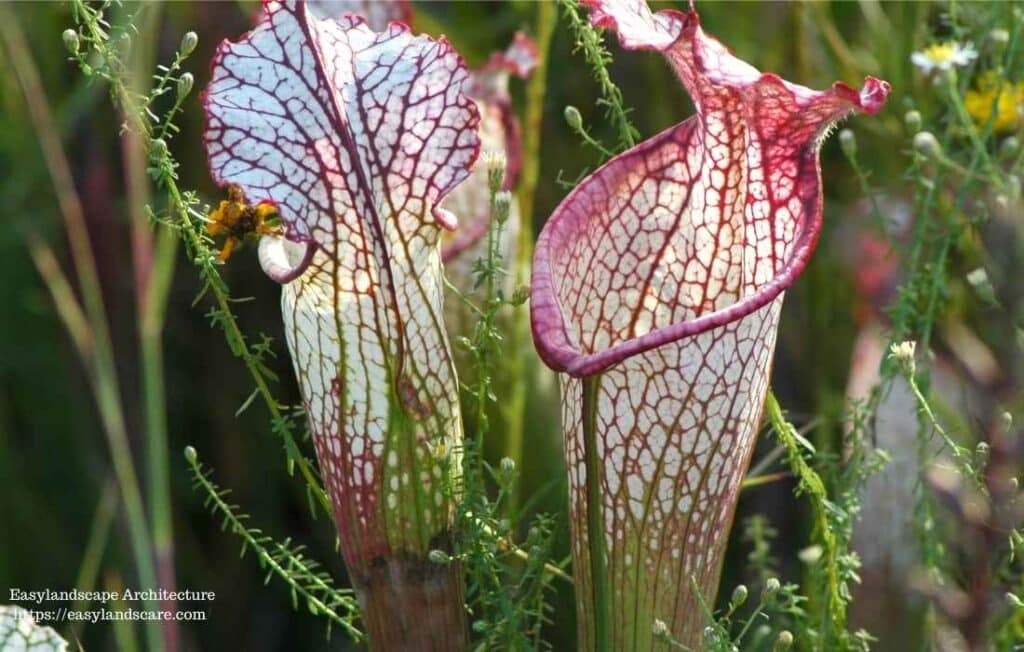
- Identify Your Genus and Species: This is the most crucial step for providing appropriate care.
- Use Pure Water Only.
- Provide Bright Light (adjust based on species).
- Maintain Appropriate Moisture Levels (avoid extremes).
- Ensure Good Humidity (especially for tropical varieties).
- Use a Nutrient-Poor, Acidic Substrate.
- Avoid Fertilizers.
- Understand Dormancy Requirements (for temperate species).
Caring for pitcher plants can be a rewarding experience, allowing you to witness the fascinating adaptations of these carnivorous wonders. By understanding the general guidelines and, most importantly, the specific needs of your plant’s genus and species, you can cultivate a thriving and captivating collection. Remember that pure water and the right light conditions are fundamental to their success. With diligent attention to Pitcher Plant Care, your plants will flourish, showcasing their natural beauty and unique feeding habits.

